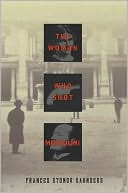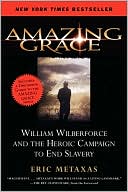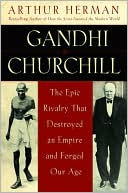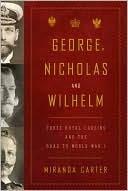The Woman Who Shot Mussolini
Search in google:
The astonishing untold story of a woman who tried to stop the rise of Fascism and change the course of historyAt 11 a.m. on Wednesday, April 7, 1926, a woman stepped out of the crowd on Rome’s Campidoglio Square. Less than a foot in front of her stood Benito Mussolini. As he raised his arm to give the Fascist salute, the woman raised hers and shot him at point-blank range. Mussolini escaped virtually unscathed, cheered on by practically the whole world. Violet Gibson, who expected to be thanked for her action, was arrested, labeled a “crazy Irish spinster” and a “half-mad mystic”—and promptly forgotten. Now, in an elegant work of reconstruction, Frances Stonor Saunders retrieves this remarkable figure from the lost historical record. She examines Gibson’s aristocratic childhood in the Dublin elite, with its debutante balls and presentations at court; her engagement with the critical ideas of the era—pacifism, mysticism, and socialism; her completely overlooked role in the unfolding drama of Fascism and the cult of Mussolini; and her response to a new and dangerous age when anything seemed possible but everything was at stake.In a grand tragic narrative, full of suspense and mystery, conspiracy and backroom diplomacy, Stonor Saunders vividly resurrects the life and times of a woman who sought to forestall catastrophe, whatever the cost. Library Journal Of the many people who tried to assassinate Italian dictator Benito Mussolini, only one was a woman—and a petite, well-to-do Irishwoman at that. Stonor Saunders (The Cultural Cold War: The CIA and the World of Arts and Letters) seeks to resurrect the lost story of Violet Gibson, who wounded Mussolini during an assassination attempt in 1926 but has been relegated to footnote status in history. Gibson's story is remarkable; unfortunately, the archival record of her life before the assassination attempt is thin. Stonor Saunders attempts to make up for this by tying Gibson to hemmed-in women of the time, such as Virginia Woolf and James Joyce's daughter, Lucia. The result is a book heavily padded with irrelevant digressions and musings. While the author clearly feels passionately about resurrecting not only the story but the public image of her subject, she fails to make the case that Gibson was anything other than mentally ill. VERDICT An interesting case plucked out of obscurity fails to provide enough fodder for a full-length book. An optional choice.—Elizabeth Goldman, Kingston Frontenac P.L., Ont.
Prologue: Now 1 Wednesday, 7 April 1926 PART ONE: REVELATIONI. Then 19II. Open, O Ye Heavenly Gates 23III. The Problem of Being 32IV. The New Mystics 40V. La Femme Qui Cherche 45VI. L'Homme Qui Cherche 51VII. Hoc Est Corpus Meum 54VIII. Holy War 65IX. Il Miglior Fabbro 73X. Things Snap 79 PART TWO: ACTSI. Theater of Madness 101II. Martyrs 111III. Gethsemane 121IV. What God Wants 126V. Providential Escape 132VI. Questions 144VII. Secrets 156 VIII. The New Augustus 166IX. Hidden Hands 175X. Lives of the Saints 180XI. Mea Culpa 191XII. Examination 198XIII. Stigmata 208XIV. Heretics 213XV. Lockdown 223XVI. Special Justice 231XVII. Lucid Insanity 238XVIII. Exodus 246 PART THREE: LAMENTATIONSI. Mansion of Despair 255II. The Absence of God 264III. Buried Alive 271IV. Cometh the Hour 282V. By the Heels at Milano 297VI. Casting Off 306VII. Death in Exile 314 Epilogue 317 Notes 321Acknowledgments 363Picture Credits 365Index 367








